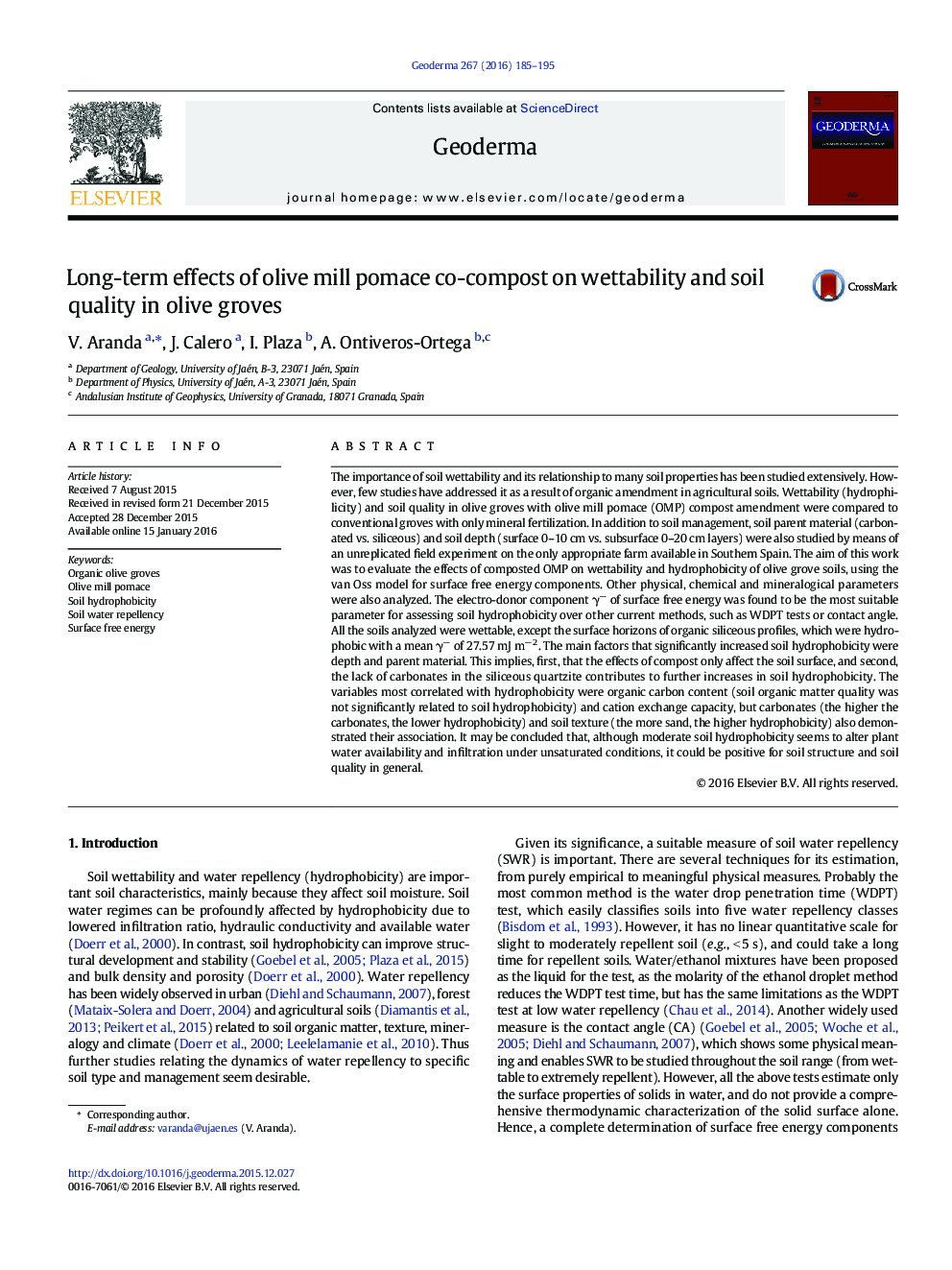| کد مقاله | کد نشریه | سال انتشار | مقاله انگلیسی | نسخه تمام متن |
|---|---|---|---|---|
| 6408387 | 1629450 | 2016 | 11 صفحه PDF | دانلود رایگان |
- Hydrophobicity is the major physical property affecting composted OMP use.
- Soil hydrophobicity was related to management and soil type.
- Soil hydrophobicity was related mainly to OC and carbonate content and texture.
- The amended silicic soils showed the most significant increases in hydrophobicity.
- Component É£â was the most suitable parameter for assessing soil hydrophobicity.
The importance of soil wettability and its relationship to many soil properties has been studied extensively. However, few studies have addressed it as a result of organic amendment in agricultural soils. Wettability (hydrophilicity) and soil quality in olive groves with olive mill pomace (OMP) compost amendment were compared to conventional groves with only mineral fertilization. In addition to soil management, soil parent material (carbonated vs. siliceous) and soil depth (surface 0-10 cm vs. subsurface 0-20 cm layers) were also studied by means of an unreplicated field experiment on the only appropriate farm available in Southern Spain. The aim of this work was to evaluate the effects of composted OMP on wettability and hydrophobicity of olive grove soils, using the van Oss model for surface free energy components. Other physical, chemical and mineralogical parameters were also analyzed. The electro-donor component γâ of surface free energy was found to be the most suitable parameter for assessing soil hydrophobicity over other current methods, such as WDPT tests or contact angle. All the soils analyzed were wettable, except the surface horizons of organic siliceous profiles, which were hydrophobic with a mean γâ of 27.57 mJ mâ 2. The main factors that significantly increased soil hydrophobicity were depth and parent material. This implies, first, that the effects of compost only affect the soil surface, and second, the lack of carbonates in the siliceous quartzite contributes to further increases in soil hydrophobicity. The variables most correlated with hydrophobicity were organic carbon content (soil organic matter quality was not significantly related to soil hydrophobicity) and cation exchange capacity, but carbonates (the higher the carbonates, the lower hydrophobicity) and soil texture (the more sand, the higher hydrophobicity) also demonstrated their association. It may be concluded that, although moderate soil hydrophobicity seems to alter plant water availability and infiltration under unsaturated conditions, it could be positive for soil structure and soil quality in general.
Journal: Geoderma - Volume 267, 1 April 2016, Pages 185-195
